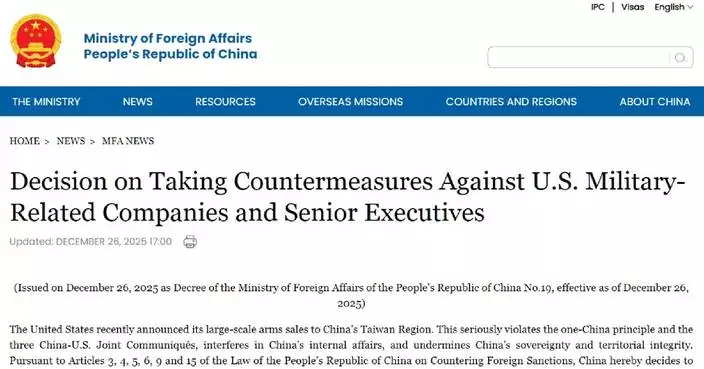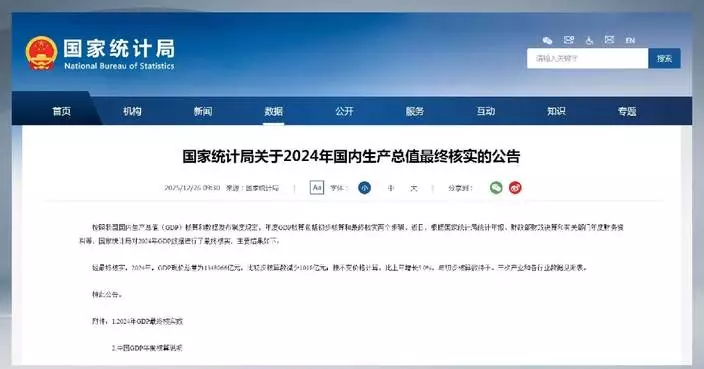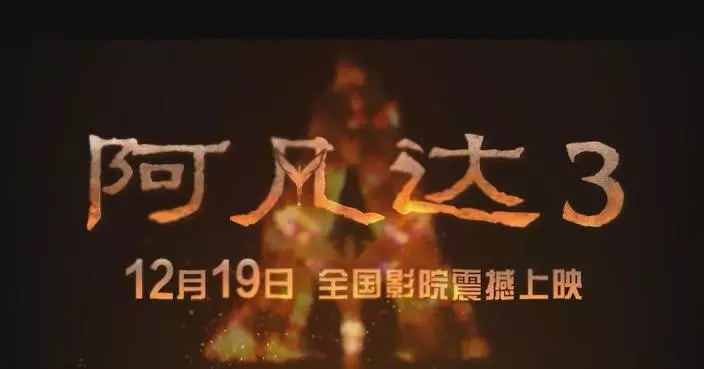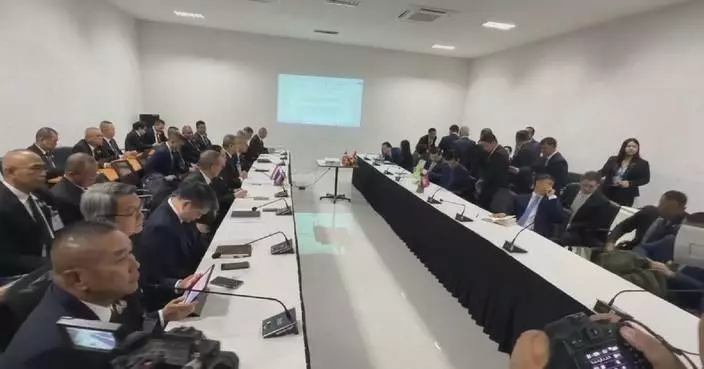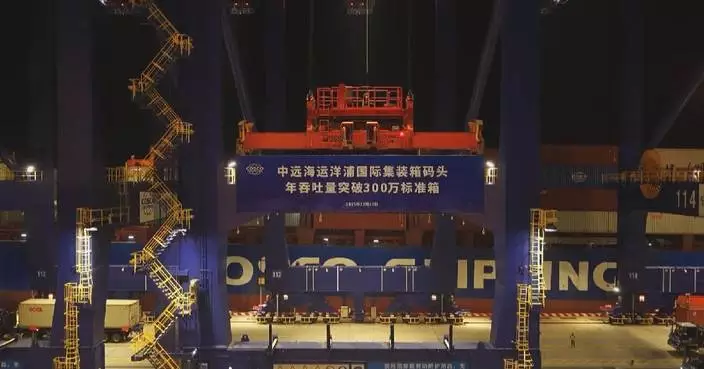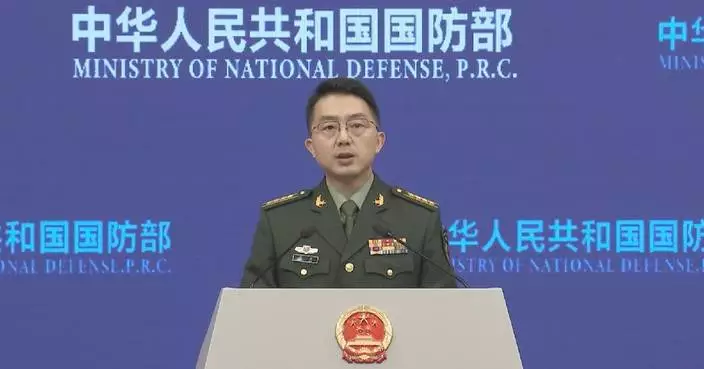Feature · News
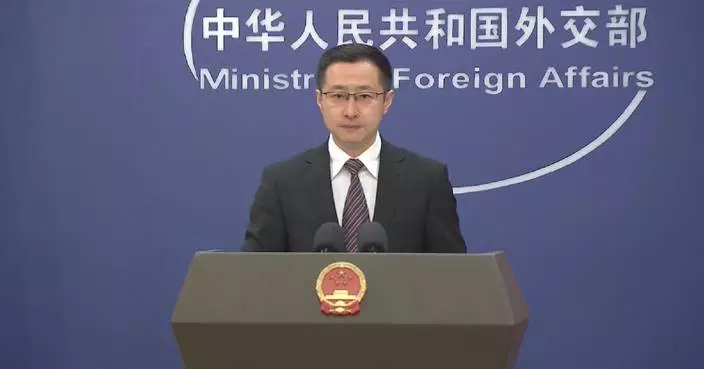
China criticizes Japan's record defense budget plan

China launches national venture capital guidance fund

California's intense winter storms turned some roads into rivers of mud

China's digital industry revenue up about 9 pct in 2025
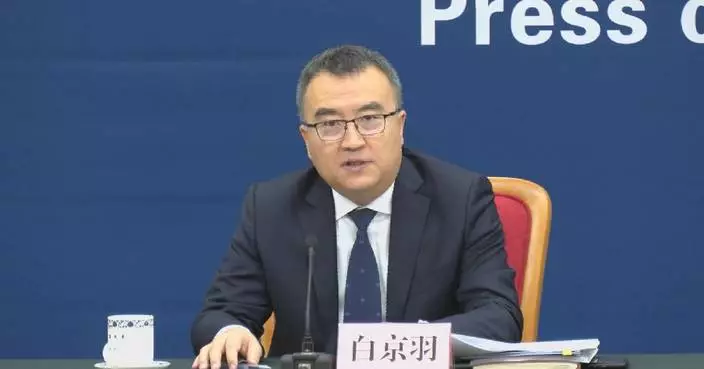
China launches state-backed guidance fund to support emerging, future industries

Japan's nuclear ambition must be resolutely stopped: commentary

China's high-speed rail sees major leap in both capacity, service quality

BP China Insight : U.S. Sanctions Ex-EU Official Who Sought to Be Washington's Loyal Ally
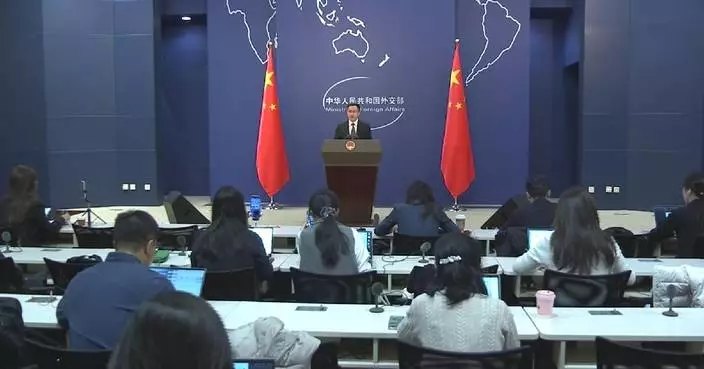
China firmly opposes Japan's dangerous moves in cyber field
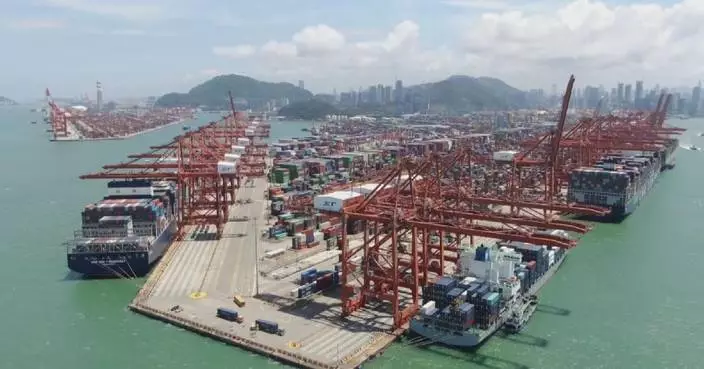
Hainan FTP sees 4 bln yuan in zero-tariff goods imported during 1st week of special customs operations

New melioidosis case reported in Hong Kong; public urged to maintain hygiene and avoid muddy water after storms.

China to offer more public products to whole globe through innovation: spokesman

China’s 2025 cotton output jumps by 7.7 pct

China urges Japan to reflect on history of aggression
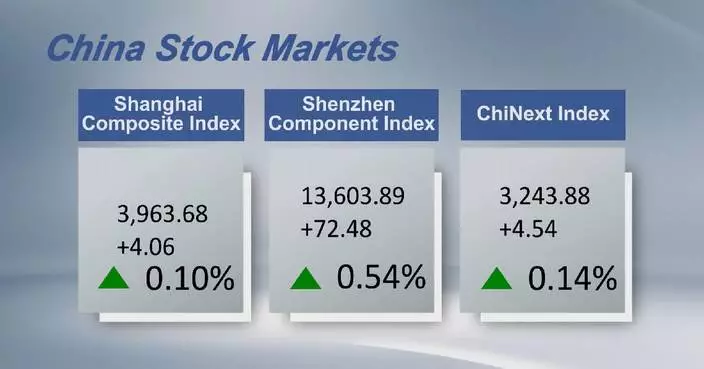
Chinese shares close higher Friday

Christmas joy returns to Tyre in southern Lebanon one year after war's end
China's high-speed rail sees major leap in both capacity, service quality

BP China Insight : U.S. Sanctions Ex-EU Official Who Sought to Be Washington's Loyal Ally
China firmly opposes Japan's dangerous moves in cyber field
Hainan FTP sees 4 bln yuan in zero-tariff goods imported during 1st week of special customs operations
China criticizes Japan's record defense budget plan
China launches national venture capital guidance fund

California's intense winter storms turned some roads into rivers of mud
China's digital industry revenue up about 9 pct in 2025
China launches state-backed guidance fund to support emerging, future industries
Japan's nuclear ambition must be resolutely stopped: commentary

New melioidosis case reported in Hong Kong; public urged to maintain hygiene and avoid muddy water after storms.

China to offer more public products to whole globe through innovation: spokesman
China’s 2025 cotton output jumps by 7.7 pct
China urges Japan to reflect on history of aggression
Chinese shares close higher Friday
Christmas joy returns to Tyre in southern Lebanon one year after war's end
Feature·Bloggers

【Bastille Commentary】Green Nails? The Lie No Lawyer Would Touch

【What Say You?】How Jimmy Lai's Right-Hand Man Ran a Corporate Shakedown Operation

【Deep Blue】Trump's "Empire Strikes Back" Gambit: A Long Shot at Best

【What Say You?】Unfinished business With the “anti-Hong Kong triangle”?

【Bastille Commentary】UK's Hypocrisy on Display: Seizing Private Assets While Preaching Freedom

【What Say You?】London’s Selective Memory on National Security

A scrapyard worker injured in the UPS plane crash dies on Christmas, raising deaths to 15
- Trump-Zelenskyy talks will address security guarantees and reconstruction, Ukraine leader says
- Harvey Weinstein accuser Kaja Sokola is being sued for defamation. The plaintiff: Her sister
- Lebanese Cabinet approves a draft law to return funds wiped out with the 2019 collapse of banks
- Yemen separatists accuse Saudi Arabia of launching airstrikes against their forces
- Delaware State Police say DMV gunman let customers leave, fired at approaching officers
- Palestinian man kills 2 in car-ramming and stabbing attack in northern Israel and injures 2 others
- US stocks hover at record highs in quiet trading; gold and silver prices jump
- Nigerian villagers are rattled by US airstrikes that made their homes shake and the sky glow red
- A beginner's guide to Kwanzaa

Urumqi-Yuli Expressway boosts Xinjiang's trade connectivity, strengthens regional integration
- China's foreign exchange market transactions total 3.44 trln U.S. dollars in November
- China's high-speed rail exceeds 50,000-km milestone as new route launches
- Military analyst calls for vigilance against Japan's accelerating militarization
- Egypt cuts key interest rates by 1 pct as inflation slightly down
- DR Congo celebrates Christmas with resilience despite recurring violence
- Horse-themed products gallop off shelves as new zodiac year approaches
- Flower demands boom in Shanxi as new year draws near
- Operation of Urumqi-Yuli expressway expands road network of China's Xinjiang
- China's Chengdu launches low-altitude blood transport service

PaXini to Debut at CES 2026, Advancing Embodied AI Infrastructure Through Tactile Sensing
- Virginia offshore wind developer sues over Trump administration order halting projects
- Dreame Technology Spreads Holiday Cheer with Donation of 60 Air Purifiers to Save the Children
- Thailand bombs a village in Cambodia even as both nations hold border talks to end armed clashes
- Former Malaysian leader Najib Razak sentenced to 15 years and hefty fine in 1MDB corruption trial
- Why your holiday gift returns might go to a landfill and what you can do about it
- CoinEx Marks Its 8th Anniversary in Malaysia with a Nautical-Themed Community Gathering
- Crayola Launches Global McDonald's Happy Meal® Experience That's Out-of-This-World
- Trump launched global tariff wars in 2025. Here's a recap of his trade actions this year
- Canton Fair's December Industry Thematic Event Focuses on Lighting, Electrical, Hardware, and Tools

Photos show California homes buried in mud and debris during Christmas storms
- Virtual reality opens doors for older people to build closer connections in real life
- Pro-Russian hackers claim cyberattack on French postal service
- What's an atmospheric river? AP explains the weather phenomenon
- Starlink in the crosshairs: How Russia could attack Elon Musk's conquering of space
- Japan's new flagship H3 rocket fails to put geolocation satellite into orbit
- The rise of deepfake cyberbullying poses a growing problem for schools
- Boys at her school shared AI-generated, nude images of her. After a fight, she was the one expelled
- These influencers are teaching Christianity online — and young people are listening
- Doctor's orders? ‘Belly laugh at least two to five days a week'

Soprano Asmik Grigorian to lead 'Carmen' and sing mezzo-soprano role this summer
- New York Knicks star Karl-Anthony Towns and influencer Jordyn Woods are engaged
- ICYMI: Close out 2025 with these great reads from AP
- Afghanistan's historic Ariana Cinema torn down to make way for shopping center
- From red donkeys to vibrant art: Fernando Dávila's colorful journey as a colorblind painter
- ‘Heated Rivalry’ series mixes hockey and queer romance and is scoring big audiences
- Photos of Christmas celebrations around the world
- Mohammad Bakri, renowned and controversial Palestinian actor and filmmaker, dies at 72
- Kennedy Center Christmas Eve jazz concert canceled after Trump name added to building
- How Christian artists are winning over listeners and entering pop's mainstream

Eagles have won 3 straight against Bills in matchup of playoff-bound teams
- Nikola Jokic breaks Steph Curry's record with 18 points in OT and Nuggets set mark with 27 OT points
- Salah steers Egypt into Africa Cup knockout stages after VAR denies South Africa late penalty
- Giants and Raiders have no interest in losing Sunday to improve their chances at No. 1 draft pick
- Burrow, Bengals look to continue late-season momentum when they host Cardinals
- 49ers host the Bears in a matchup of NFC playoff teams fighting for home-field advantage
- Developing Bengals defense ready for a strong Cardinals passing game
- Maye and the Patriots will try to finish 8-0 on the road and win the AFC East when they visit Jets
- Ohio University promotes John Hauser to head coach after the Bobcats' Frisco Bowl victory
- Chiefs' valiant effort falls short against the Broncos in a Christmas night thriller

Police Arrest 12 More Suspects in Tin Shui Wai Murder Case, Totaling 23 Arrested Since August.
- Hong Kong Customs Seizes Endangered Arowanas and Stingrays Worth $52,000 at Control Point
- Government Mobilizes Support and Investigation Following Tai Po Wang Fuk Court Fire
- Experience Hong Kong's Film Culture at Yau Ma Tei Police Station Exhibition Opening January 2, 2026
- Mirs Bay in Hong Kong Recognized as Outstanding Example of Beautiful Bays for Marine Ecological Protection Efforts
- Special New Year's Eve Transport and Boundary-Crossing Arrangements Announced for Hong Kong and Mainland Travel
- Government Task Forces Mobilize for Wang Fuk Court Fire Relief and Investigation Efforts
- Hong Kong Reports No New Chikungunya Cases, Intensifies Mosquito Control Efforts in Affected Areas
- Correctional Services Department Hosts Christmas Activities for Persons in Custody with Religious Leaders' Support
- Correctional Officer Prevents Suicide Attempt at Lo Wu Correctional Institution on Christmas Morning

Adorable tussle between protected species caught on camera on Qinghai-Xizang Plateau
- Snowfall blankets Mt. Lushan in Jiangxi as tourists enjoy winter wonderland
- National public ice and snow season opens sub-venue in Heilongjiang
- North China's Inner Mongolia witnesses extremely cold weather
- China's film market sustains strong growth in 2025
- Sea of clouds, cherry blossoms in Yunnan mountains attract tourists
- Rarely seen yellow-throated martens caught having fun on camera
- China's southernmost shopping mall opens
- Joint drill on handling water emergencies held among China, Laos, Myanmar, Thailand
- Online shoppers in South Africa face financial fraud, identity theft risks
Category · News

A scrapyard worker injured in the UPS plane crash dies on Christmas, raising deaths to 15

Soprano Asmik Grigorian to lead 'Carmen' and sing mezzo-soprano role this summer

Eagles have won 3 straight against Bills in matchup of playoff-bound teams

Nikola Jokic breaks Steph Curry's record with 18 points in OT and Nuggets set mark with 27 OT points

Salah steers Egypt into Africa Cup knockout stages after VAR denies South Africa late penalty

Giants and Raiders have no interest in losing Sunday to improve their chances at No. 1 draft pick

Trump-Zelenskyy talks will address security guarantees and reconstruction, Ukraine leader says

Harvey Weinstein accuser Kaja Sokola is being sued for defamation. The plaintiff: Her sister

Lebanese Cabinet approves a draft law to return funds wiped out with the 2019 collapse of banks

Burrow, Bengals look to continue late-season momentum when they host Cardinals

Yemen separatists accuse Saudi Arabia of launching airstrikes against their forces

49ers host the Bears in a matchup of NFC playoff teams fighting for home-field advantage

Developing Bengals defense ready for a strong Cardinals passing game

PaXini to Debut at CES 2026, Advancing Embodied AI Infrastructure Through Tactile Sensing

Delaware State Police say DMV gunman let customers leave, fired at approaching officers

Maye and the Patriots will try to finish 8-0 on the road and win the AFC East when they visit Jets

Ohio University promotes John Hauser to head coach after the Bobcats' Frisco Bowl victory

Palestinian man kills 2 in car-ramming and stabbing attack in northern Israel and injures 2 others

US stocks hover at record highs in quiet trading; gold and silver prices jump

Nigerian villagers are rattled by US airstrikes that made their homes shake and the sky glow red

Chiefs' valiant effort falls short against the Broncos in a Christmas night thriller

A beginner's guide to Kwanzaa

Key issues unresolved in US-Ukraine talks on ending Russia's war, according to Zelenskyy

Harry Redknapp's horse The Jukebox Man wins the King George VI Chase

Vikings still finding value and fun in winning down the stretch despite being out of contention
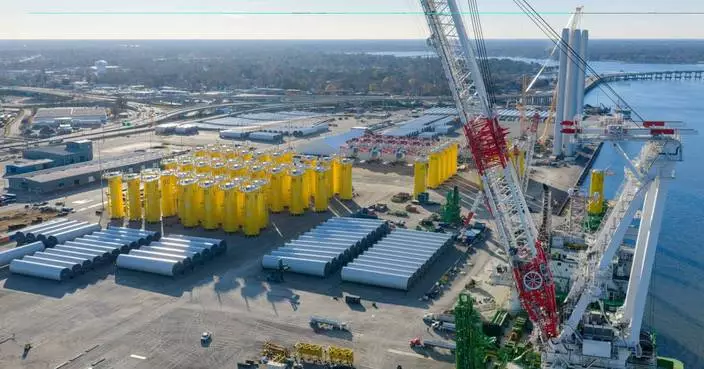
Virginia offshore wind developer sues over Trump administration order halting projects

New York Knicks star Karl-Anthony Towns and influencer Jordyn Woods are engaged

Urumqi-Yuli Expressway boosts Xinjiang's trade connectivity, strengthens regional integration

Photos show California homes buried in mud and debris during Christmas storms

Police Arrest 12 More Suspects in Tin Shui Wai Murder Case, Totaling 23 Arrested Since August.

Kerecis Fish-Skin Platform Broadens Coverage as CMS Withdraws Proposed Skin Substitute LCDs

Jaguars derive extra motivation from Pro Bowl voting ahead of AFC playoffs

Mosque bombing in Syria leaves 8 dead and 18 wounded

Dreame Technology Spreads Holiday Cheer with Donation of 60 Air Purifiers to Save the Children

Why there is only one Premier League match on Boxing Day this year
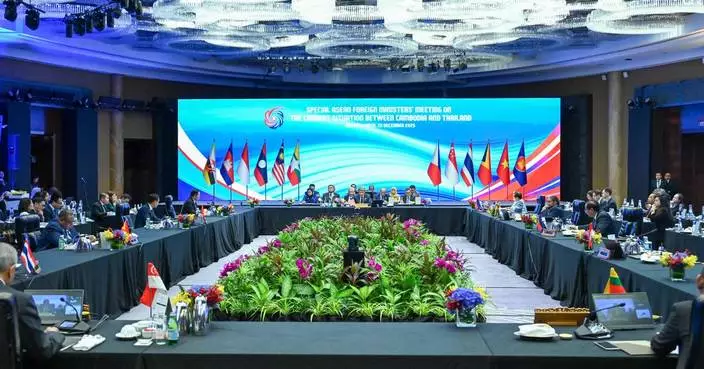
Thailand bombs a village in Cambodia even as both nations hold border talks to end armed clashes
China's foreign exchange market transactions total 3.44 trln U.S. dollars in November
China's high-speed rail exceeds 50,000-km milestone as new route launches

Christmas in Venezuela, polleras and more top photos this week in Latin America and the Caribbean

Former Malaysian leader Najib Razak sentenced to 15 years and hefty fine in 1MDB corruption trial

America250 Announces Celebration of America Turning 250 on New Year’s Eve in Times Square

What to know about the militants targeted by US airstrikes in northwest Nigeria

Welfare Solutions for Jobless Growth in the AI Era: Seoul Stepping Stone Income

JETRO to Host Thrice Daily Pitch Events at CES 2026 Japan Pavilion and Support Exhibiting Startups at Media Events

Why your holiday gift returns might go to a landfill and what you can do about it
Military analyst calls for vigilance against Japan's accelerating militarization

US launches strikes against Islamic State group in Nigeria after attacks target Christians
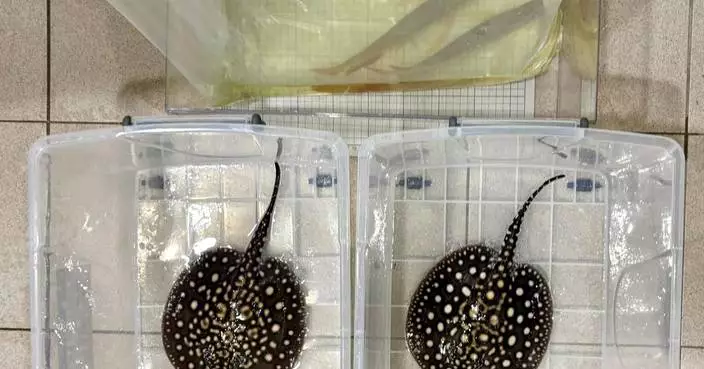
Hong Kong Customs Seizes Endangered Arowanas and Stingrays Worth $52,000 at Control Point

Hilton Global Associates Appoints Heather Calabret-Morison as Senior Director of Business Development
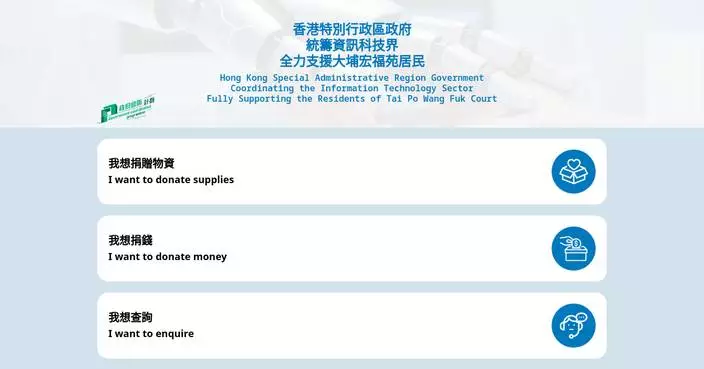
Government Mobilizes Support and Investigation Following Tai Po Wang Fuk Court Fire

CoinEx Marks Its 8th Anniversary in Malaysia with a Nautical-Themed Community Gathering
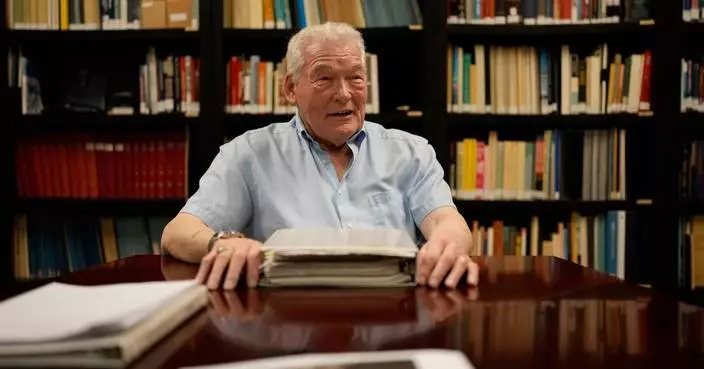
ICYMI: Close out 2025 with these great reads from AP

Crayola Launches Global McDonald's Happy Meal® Experience That's Out-of-This-World
Egypt cuts key interest rates by 1 pct as inflation slightly down

At least 15 injured in a knife and chemical attack at a factory in Japan

Trump launched global tariff wars in 2025. Here's a recap of his trade actions this year

Lions are out of the playoff race, Packers are among 11 teams in and 3 spots remain open

Wembanyama's Spurs emerge as threat to defending champion Thunder after three wins over OKC

Canton Fair's December Industry Thematic Event Focuses on Lighting, Electrical, Hardware, and Tools

Anycubic Opens Deposits for Kobra X, Following Formnext Debut of Its Next-Generation Entry-Level Multicolor FDM Printer

Across Borders, Against All Odds: Team Infinix Triumphs as "Chicken Dinner Victory Squad" at PMGC 2025

Z.ai Open-Sources GLM-4.7, a New Generation Large Language Model Built for Real Development Workflows

NIA Joins Forces with TAT to Reignite ‘Amazing Thailand’ Through Innovation Power, Transforming Thai Tourism and Leveraging Creativity and Culture to Drive a New Tourism Economy
DR Congo celebrates Christmas with resilience despite recurring violence

Korean prosecutors seek 10-year sentence for ousted President Yoon in first martial law trial
Horse-themed products gallop off shelves as new zodiac year approaches
Flower demands boom in Shanxi as new year draws near
Operation of Urumqi-Yuli expressway expands road network of China's Xinjiang
China's Chengdu launches low-altitude blood transport service
Adorable tussle between protected species caught on camera on Qinghai-Xizang Plateau
Snowfall blankets Mt. Lushan in Jiangxi as tourists enjoy winter wonderland
National public ice and snow season opens sub-venue in Heilongjiang
North China's Inner Mongolia witnesses extremely cold weather
China's film market sustains strong growth in 2025
Sea of clouds, cherry blossoms in Yunnan mountains attract tourists
Rarely seen yellow-throated martens caught having fun on camera
China's southernmost shopping mall opens
Joint drill on handling water emergencies held among China, Laos, Myanmar, Thailand

Newly opened Xi'an-Yan'an high-speed railway to boost CPC heritage tourism in Shaanxi
Online shoppers in South Africa face financial fraud, identity theft risks
Somalia's capital holds first direct elections in over five decades
ROK special counsel seeks 10-year prison sentence for ex-president Yoon on charges of arrest obstruction: media

TutorABC Launches 12 Specialized Industry Curriculums to Power Global Workforce Transformation
Int'l analysts condemn Japanese prime minister's 'warlike', 'dangerous' remarks


